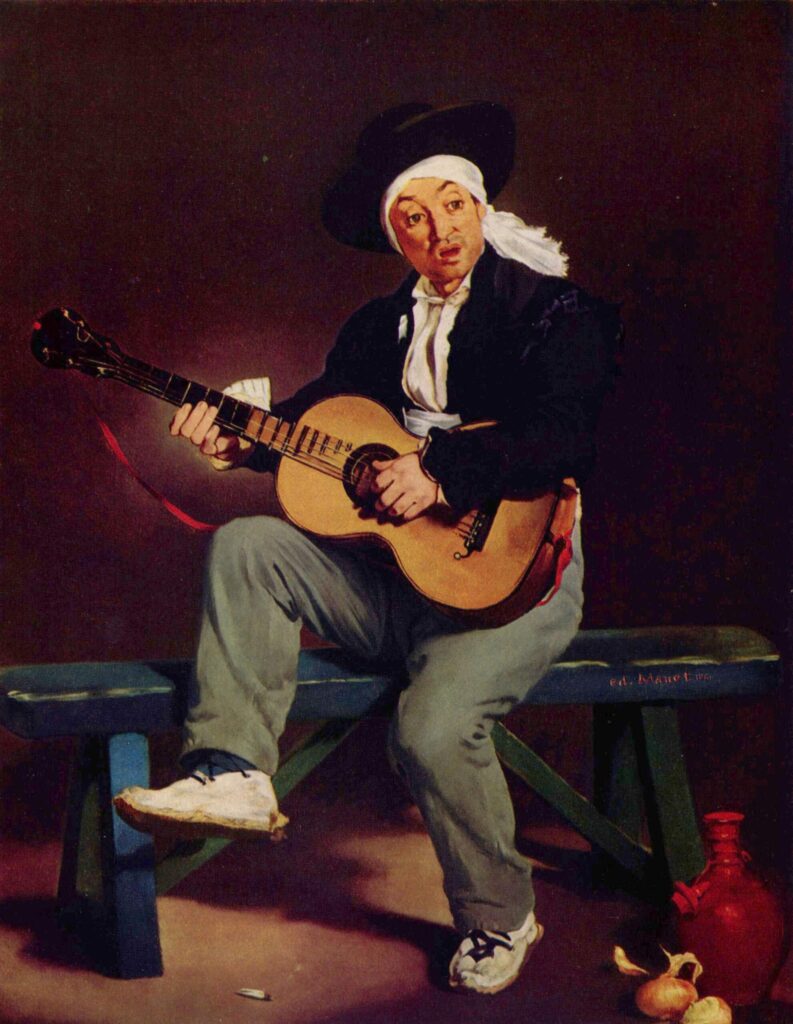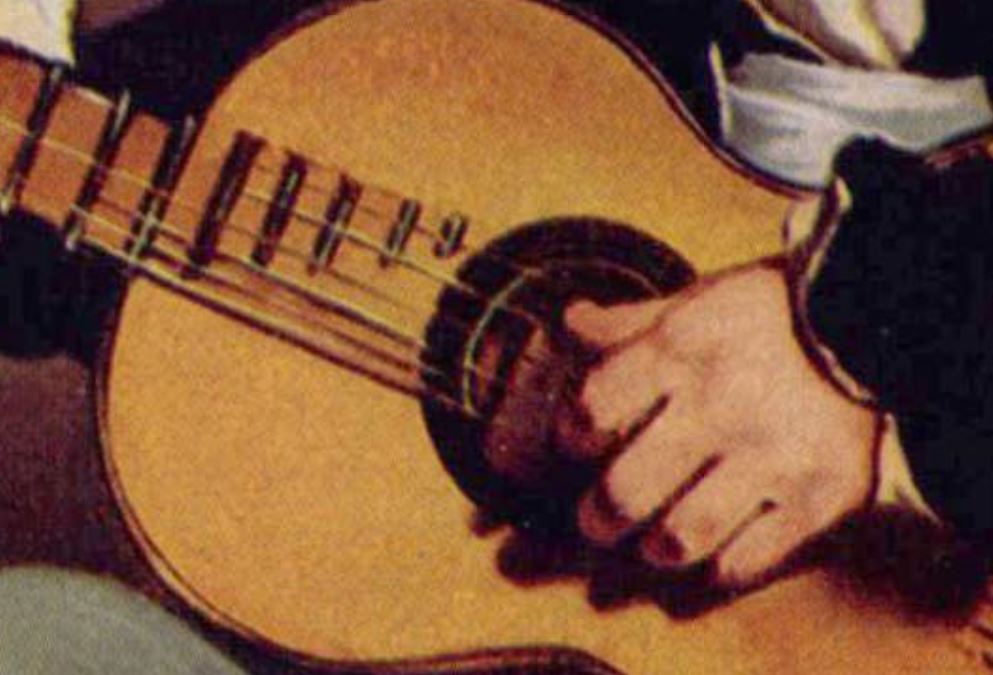
In 1860, in the vibrant Paris of the time, Edouard Manet (1832-1883) created an extraordinary work that would later be known as “The Spanish Guitarist”. However, more accurately, it should have been titled “The FAKE Spanish Guitarist”.
This canvas was honored with an exhibition at the Salon, a prestigious periodic exhibition of painting and sculpture held at the magnificent Louvre in 1861. Edouard Manet, with his masterpiece, earned an “honorable mention,” showcasing his undeniable talent. But what makes this guitarist “fake”?
The answer is surprisingly simple: he holds the guitar unusually, as a left-hander! It’s not that there are no left-handed guitarists; I have personally known some. However, if this musician had truly been left-handed and a skilled guitarist, his instrument would have been custom-built for him.

But how can one tell that the guitar is designed for right-handers and not left-handers? Two details reveal this secret to connoisseurs.
The first detail, although not too obvious, concerns the thickness of the strings: the bass notes require thicker strings compared to the treble ones. In this painting, upon close inspection, one can notice a slight change in the thickness of the strings, clearly indicating that the guitar has been played upside down.
The second clue is even more surprising, highlighted in the close-up image of the guitar. It concerns the placement of the frets, located directly on the soundbox. These frets are used to obtain the higher notes of the instrument and are generally reserved for the treble strings, which are located at the bottom when the guitar is played correctly. In this case, they are positioned at the top!
Of course, some might point out that the famous rock guitarist Jimi Hendrix (1942-1970) played a right-handed guitar, even though he played it left-handed, reversing the order of the strings. But that’s another story 🙂
It is worth noting that for me, having studied and taught classical guitar for many years, understanding this painting was easy, a real “home game”.












Dettaglio molto interessante, non ho trovato nessun’altra fonte che lo spiegasse in maniera così meticolosa, complimenti.